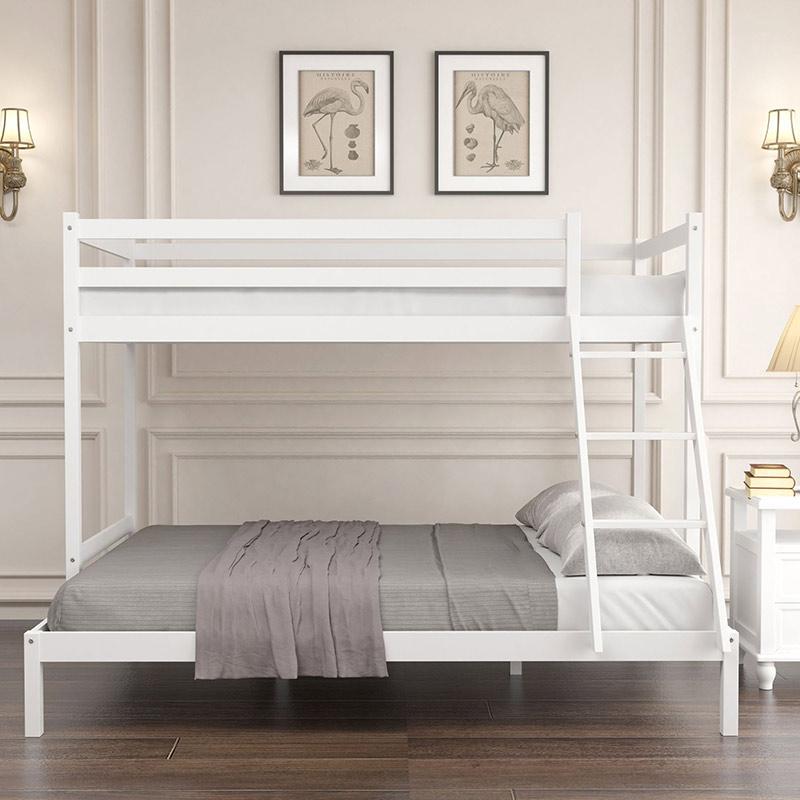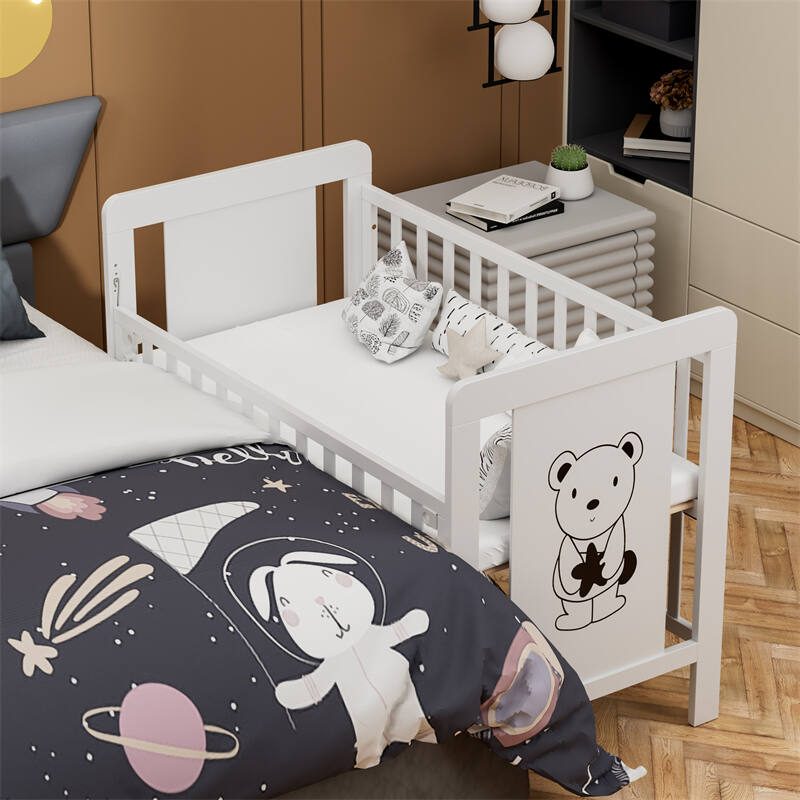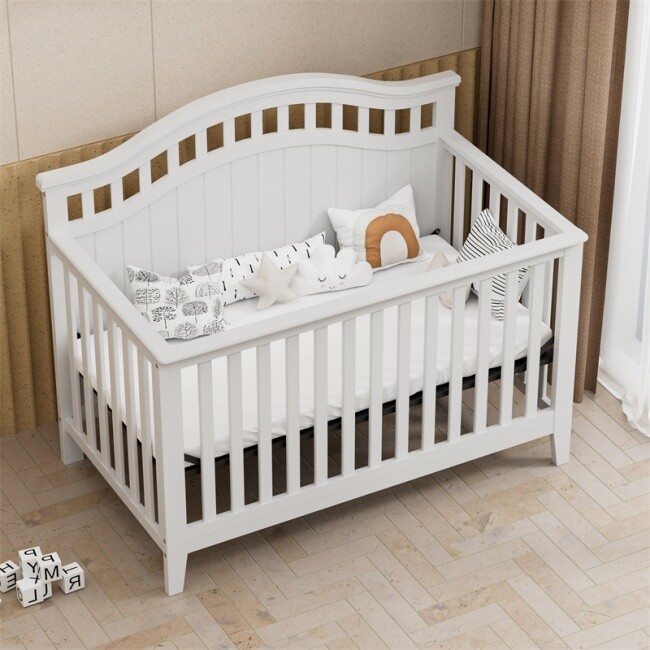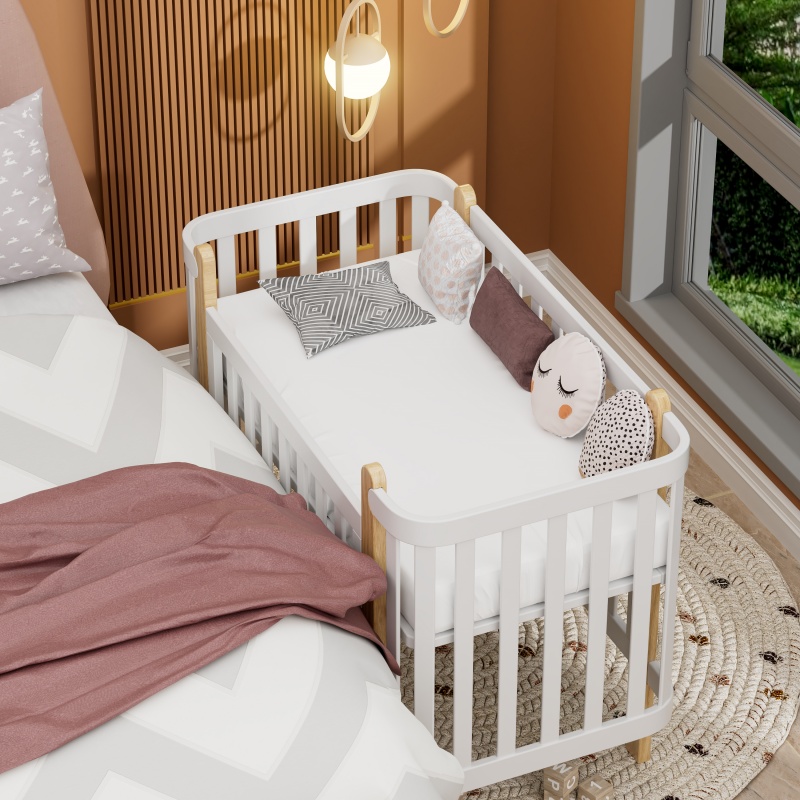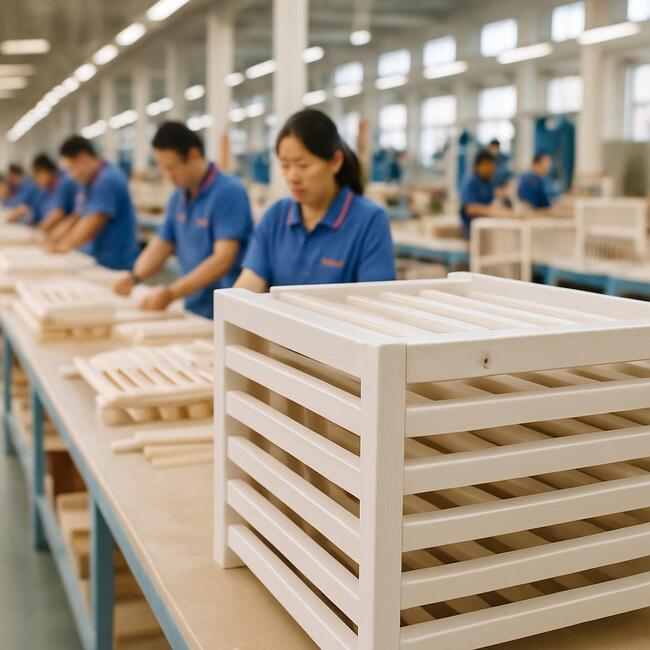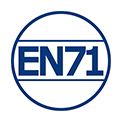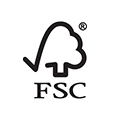Bunk beds are a popular space-saving solution for kids’ rooms, vacation homes, and even college dorms. They’re fun, functional, and often a childhood favorite. But as a piece of furniture that is much higher than the ground, its safety issues cannot be ignored.
If you assume a bunk bed is safe just because it’s sold in stores, think again.
From sudden ladder falls to dangerously misfitted mattresses and unstable frames, the risks associated with bunk beds are often underestimated—and that’s a serious problem.
Understanding international bunk bed safety regulations, structural design principles, and material safety can help prevent these risks. This guide focuses on these factors and guides you on how to make the best purchase decision for different situations.
What Are the Current Bunk Bed Safety Standards?
US Bunk Bed Safety Standard (ASTM F1427 & CPSC)
In the United States, bunk bed safety is primarily governed by the ASTM F1427 standard, developed by ASTM International, with additional oversight from the Consumer Product Safety Commission (CPSC).
The ASTM F1427 standard mandates that bunk beds must have guardrails on both sides of the upper bunk, with a maximum gap of 3.5 inches between the guardrail and the mattress. Openings in the bed structure must not measure between 3.5 and 9 inches.
The mattress support system must be designed to prevent the mattress from lifting at the corners, which could create hazardous gaps.
Additionally, all bunk beds must include warning labels specifying that the top bunk is not suitable for children under six years of age.
EU Bunk Bed Safety Standard (EN 747-1:2024)
The European Union regulates bunk bed safety under EN 747-1:2024 and EN 747-2:2024. These standards apply to beds with a sleeping surface higher than 23.6 inches above the floor.
The guardrails on the upper bunk must extend at least 5.9 inches above the top of the mattress. Similar to U.S. rules, the gaps between mattress edges and side structures must not allow openings that could trap a child’s head or limbs—typically, no opening should be between 2.4 inches and 4.7 inches.
The ladder must be stable and firmly attached to the frame, with evenly spaced, slip-resistant rungs. For safe access, the top of the ladder must also provide a secure handhold for transitioning in and out of bed.
All compliant bunk beds must include comprehensive assembly instructions and safety labels in the user’s native language.
China Bunk Bed Safety Standard (GB 24430.1-2009)
China’s bunk bed safety standard, GB 24430.1-2009, establishes requirements for the design, construction, and materials used in domestic bunk beds. This standard is particularly stringent regarding structural stability and material safety.
Guardrails must extend at least 7.9 inches above the mattress. The bed frame must support a static load of at least 220 lbs per sleeping surface.
Additionally, all materials and finishes must comply with China’s GB 18584 standard, which limits formaldehyde emissions and other toxic substances in furniture coatings.
Australian/New Zealand Standard (AS/NZS 4220:2003)
Australia—and by extension, New Zealand—enforces AS/NZS 4220:2003 as a mandatory safety standard for bunk beds sold within the country.
Guardrails must be installed on all four sides of the upper bunk and extend at least 10.2 inches (260 mm) above the mattress base. However, the Australian Competition and Consumer Commission (ACCC) recommends increasing this height to 14.2 inches (360 mm).
The beds must feature a permanent label reading “MAX. MATTRESS HEIGHT”, and this label must be placed at least 6.3 inches (160 mm) below the top of the guardrail.
Unlike other regions, Australia’s standard explicitly states that the top bunk is unsuitable for children under nine years of age.
What Is the Safe Structural Design of a Bunk Bed?
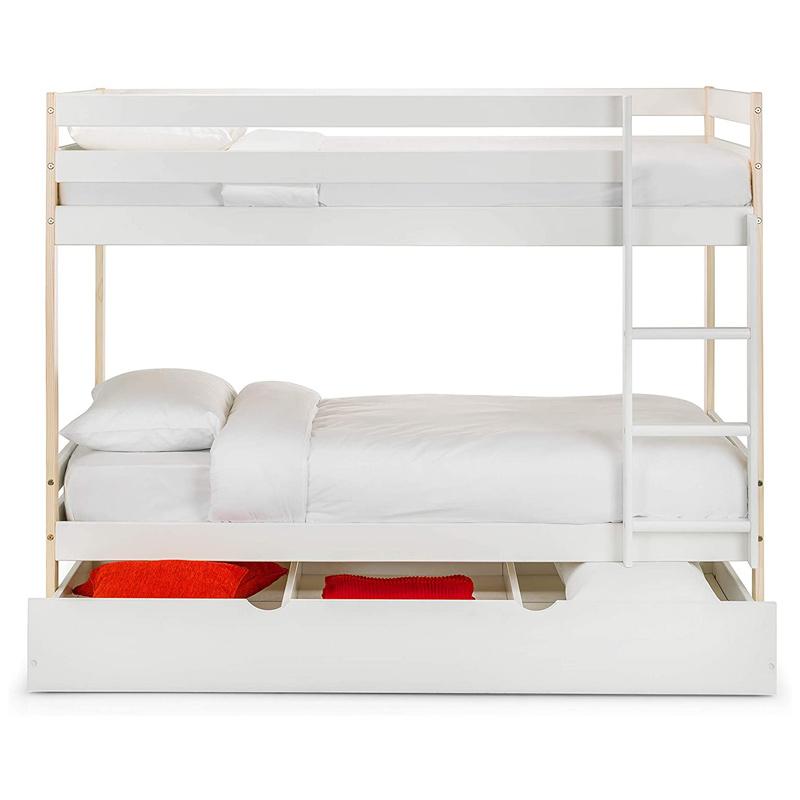
Frame Integrity and Stability
A robust design features a rigid rectangular base with reinforced corner joints, typically constructed from solid hardwood or heavy-duty steel. The vertical posts should be thick enough to resist lateral sway. Cross-supports between the posts, often in an “H” or “X” pattern, prevent the bed from rocking under movement.
Guardrail Integration
Guardrails must form a continuous barrier on all open sides of the upper bunk, including the portion against the wall—a frequently overlooked hazard area.
The railings should attach directly to the vertical posts rather than just the side panels, distributing any impact force across the entire frame. The top rail should be positioned high enough to prevent rolling out but low enough that it doesn’t interfere with sitting up.
Ladder and Access Design
Each step or rung should be wide enough to accommodate a child’s feet and allow the feet to fit completely against the step. Fixed ladders have better stability, but movable ladders must be equipped with non-slip rubber pads and locking devices.
It is recommended to give priority to Z-type ladders with non-slip grooves on the footrest surface, which have a grip three times higher than straight ladders.
Load Distribution System
A properly engineered bunk bed manages weight through multiple contact points. The mattress support system—whether using slats or solid panels—must transfer weight evenly to the side rails rather than relying on corner posts alone. Center support legs, though not always required by standards, significantly enhance stability, especially in taller designs.
Which Materials and Processes Are Safer?
For elevated furniture like bunk beds, safety depends not only on design but also on every detail of materials and craftsmanship. Below, we will introduce some basic considerations for bunk bed materials and the craftsmanship that contributes to safety.
Material Selection
High-quality hardwoods such as oak, maple, or beech are widely recognized for their ability to withstand great weight without bending or cracking. Pine is a relatively softwood, which is slightly less sturdy than the above hardwood types, and its load-bearing capacity is also suitable for processing into bunk beds.
A solid hardwood bunk bed is less likely to wobble or loosen with use, and its weight contributes to overall stability. Additionally, it tends to hold screws and bolts more securely.
What you need to be wary of are bunk beds made of composite materials, which have significant risks. They are artificial woods made by mixing various materials, and formaldehyde is usually used as a binder during the production process.
Although some composite materials are labeled “low VOC” or “formaldehyde-free”, these standards are difficult to monitor in mass-produced furniture, and not all manufacturers adhere to strict guidelines. You need to be careful when choosing this type of bunk bed.
Manufacturing Process
High-quality manufacturing processes can not only improve the stability and durability of bunk beds but also effectively prevent potential safety hazards such as shaking, loosening, or accidental falling off.
Material processing and treatment: Responsible manufacturers will strictly dry and treat the wood to avoid cracks or corrosion caused by moisture or temperature changes. Whether it is wooden or metal materials, all bed frames need to be finely polished, especially metal bunk beds, which should not have sharp edges or exposed metal tips.
Structural integrity: The connection points of the bed frame need to use high-strength connectors, such as thickened bolts, reinforced angle irons, etc. For metal bunk beds, appropriate welding or joining techniques must be used to ensure that the frame remains stable.
Quality control and safety testing: The products you choose should have undergone strict safety testing before leaving the factory, including structural stability testing, load-bearing testing, and fall-proof testing, to ensure that each bed meets relevant safety standards.
What’s the Safe Mattress Size for a Bunk Bed?
When it comes to bunk beds, a mattress that’s too thick, too small, or poorly fitted can quickly turn a well-designed bunk into a serious hazard. The most critical concern lies with the upper bunk, where guardrails are designed to prevent a child from rolling off. However, these guardrails are only effective if the mattress stays within a specified thickness.
According to safety standards in the United States, the upper mattress must be low enough to maintain at least 5 inches of guardrail height above the mattress surface. That means if the guardrail rises 12 inches above the bed slats, the mattress should be no more than 7 inches thick.
But thickness isn’t the only consideration. If a mattress is too narrow or too short, a child’s limb—or worse, their head—can slip into the space and become trapped. This is why the mattress should match the bunk bed’s size precisely: for a twin bunk, a twin-size mattress; for a full bunk, a full-size mattress.
Finally, it’s essential to respect the weight limits of both the bunk bed frame and the mattress. A heavier mattress, especially when combined with an older or budget frame, can put strain on slats and joints—particularly in the top bunk, where structural stress is most concentrated.
Bunk Bed Age Restrictions and Safety Precautions
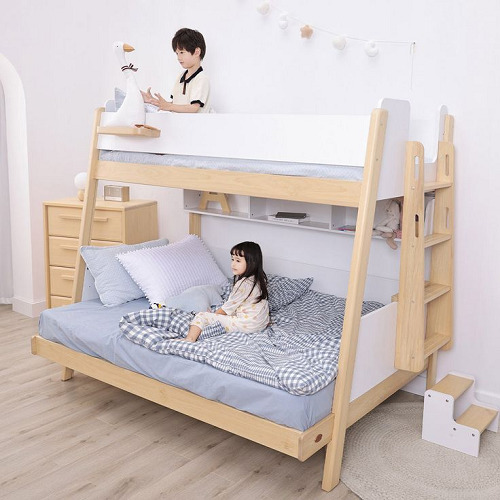
While manufacturers typically recommend a minimum age of 6 years for upper bunk use, child development experts suggest a more nuanced approach based on individual maturity and physical capabilities.
Research indicates that children under 9 often lack the coordination and risk awareness needed for safe upper bunk use, with injury data showing a significant portion of accidents occur in the 6-8 age range. This explains why Australian standards take a more conservative approach with their 9+ recommendation compared to the U.S. 6+ guideline.
For younger children under 3 years, complete avoidance of elevated sleeping surfaces is strongly advised due to underdeveloped balance and spatial judgment. Between ages 3-5, while lower bunks may be used, they should be equipped with guardrails similar to toddler beds.
When using, you need to pay attention to the following aspects:
- Children should be strictly prohibited from jumping, fighting, and other dangerous behaviors during the use of the upper bunk.
- The ladder adopts a non-slip design and the inclination angle is ≤65 degrees. It is recommended to configure luminous stickers to assist with night identification.
- Make sure the bunk bed is ≥30 inches away from the ceiling light fixture, and no sharp furniture should be placed within a radius of 5 feet.
- Lay a cushioning mat with a thickness of ≥1.2 inches on the ground to add an extra layer of protection.
- Do not exceed the load-bearing limit of the bed frame, especially since the upper bunk bed is only suitable for single use.
- Check the screws every few months to see if they are loose to prevent the bed from shaking and affecting safety.
Analysis of Common Bunk Bed Safety Hazards
According to recent data, structural hazards account for as high as 43%, mainly manifested as the risk of falling due to insufficient guardrail height. Experimental data show that when the height of the guardrail is less than 5 inches, the probability of falling during sleep for children aged 6-8 increases to 17%.
The second is the design defects of the ladder steps. The large spacing between the ladder steps or the lack of anti-slip measures can easily lead to falls.
The biggest hidden danger for young children using bunk beds is that they have low comprehension ability and low safety awareness, and they play and fight on the bed, causing falling accidents.
Cognitive misunderstandings are particularly worthy of vigilance. Many guardians mistakenly believe that “guardrails are absolutely safe,” ignoring that the thickness of the mattress exceeding the standard (standard ≤6 inches) will actually reduce the effective height of the guardrail.
Purchase Recommendations for Different Scenarios
Family bunk beds (children’s bedrooms)
Core needs: Considering both children’s activity safety and growth adaptability
Guardrail protection: Choose full-surrounding guardrails (on both sides + head of the bed) for the upper bunk.
Ladder stability: Choose a ladder with wide, non-slip steps. If space permits, it is recommended to choose a storage staircase cabinet that is integrally formed with the bed, which is safer than a traditional ladder.
Bunk beds for rental properties or hotels
Core needs: Safety for adult use + long-term maintenance convenience.
Universal guardrail design: Since guests may not be familiar with bunk beds, choose a design with high guardrails on all sides for additional safety.
Stairway access instead of ladder: Stairs with handrails are generally safer than vertical ladders and are ideal for guests who are not familiar with bunk beds.
High load-bearing capacity: Bunk beds for rental properties should adapt to different users, so frames with high load limits (preferably more than 250 pounds per bunk bed) are ideal.
Dormitories for schools/training institutions
Core requirements: High strength and durability + group behavior control.
Fixed and safe ladder: A ladder that is permanently fixed and designed to be built-in (not external).
Fireproof and sturdy materials: Metal bunk beds with fireproof coatings are usually the first choice for dormitories due to durability and safety requirements.
Conclusion
The safety lessons emerging from bunk bed research apply broadly to all elevated sleeping arrangements, revealing universal truths about fall prevention, entrapment avoidance, and long-term durability.
Different regions around the world uphold their own safety standards, and while the specifics vary—guardrail heights, gap tolerances, ladder design—they all share one common message: bunk beds must be built with the child’s safety in mind.
As we’ve explored throughout this guide, safety doesn’t come from one single feature, but from the careful combination of compliant design, proper materials, correct mattress sizing, and smart usage based on age and context.
Parents and caregivers serve as the final safety layer, recognizing that no bunk bed becomes truly safe until matched with a child’s developmental readiness.
Recommended Related Articles:

